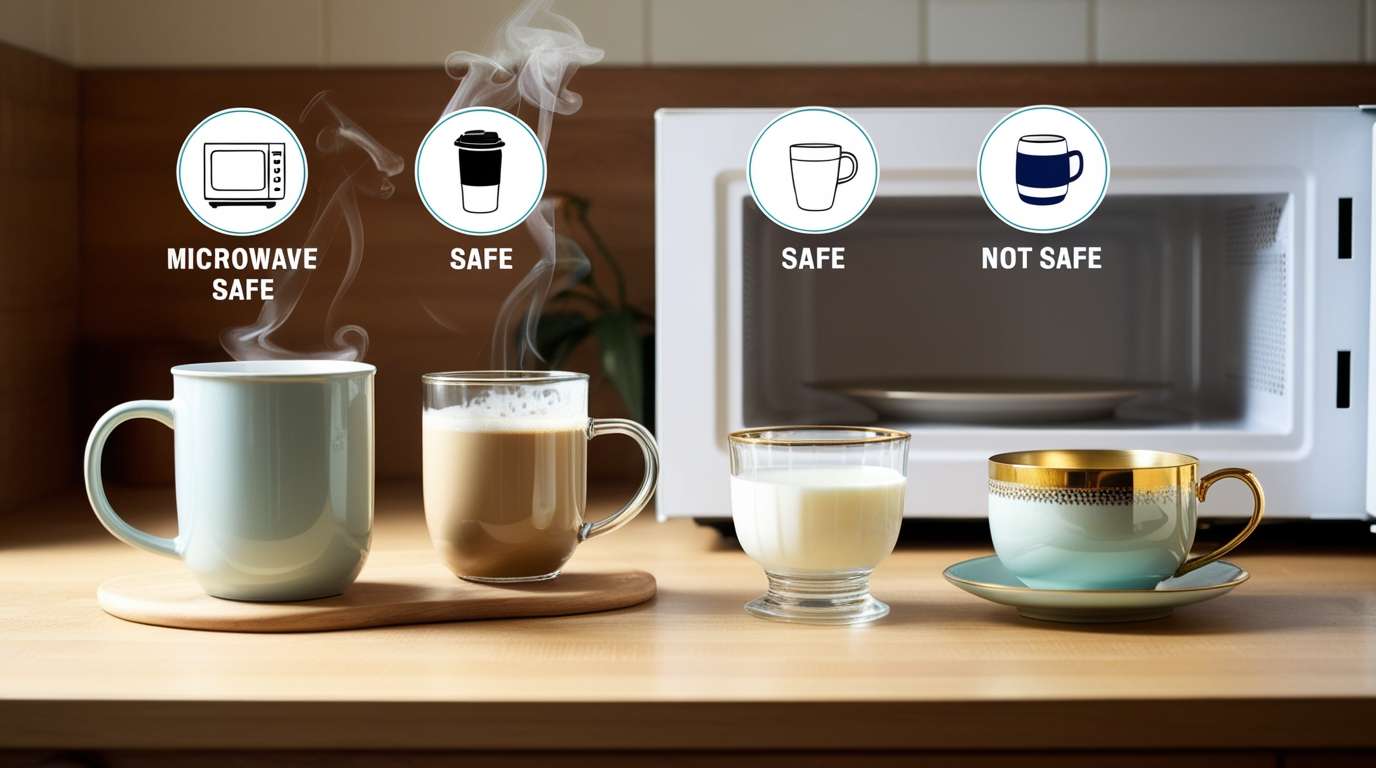
Have you ever stood in front of your microwave, holding a cup of coffee or tea, and asked yourself: “Is this actually safe to heat up in here?” You’re not alone. Many people assume every drink and every cup can go in the microwave, but that’s not always true. In fact, the wrong combination of drink and drinkware can leave you with a mess—or even a safety hazard.
In this post, we’ll break down which drinks you can safely microwave, which ones you should avoid, and the types of drinkware you should (and shouldn’t) use. Let’s clear up the mystery once and for all!
Microwaves heat liquids differently than stovetops. Instead of warming everything evenly, microwaves excite water molecules, sometimes creating superheated spots. That’s why your soup or hot chocolate can feel scorching hot in one sip and lukewarm in another.
Add in the fact that not all drinkware is microwave-safe, and suddenly the question “Can I microwave this?” becomes more important than ever. Safety first, flavor second!
The good news? Many common beverages are perfectly fine to reheat in the microwave—when done carefully.
That half-full mug of morning coffee? Pop it in the microwave for a quick warm-up. Just keep in mind that coffee can develop a bitter taste if overheated. Use short intervals (20–30 seconds) and stir in between.
Microwaving tea is a bit controversial. Purists prefer boiling water separately, but if you’re reheating already-brewed tea, it’s safe. Just be gentle—overheating may make it taste flat.
Yes, you can microwave milk, but it’s one of the trickiest liquids to get right. Heat slowly and stir frequently to avoid scalding or creating that unpleasant skin on top. Perfect for making hot cocoa or lattes.
Need hot water for instant noodles or cocoa mix? Microwave-safe. Just watch out for superheating—where water becomes hotter than boiling without bubbling. To stay safe, put a wooden stir stick or spoon handle in the cup while heating.
Both are safe to microwave, especially if you’re starting with milk or water in a microwave-safe mug. Heat in short bursts and stir often so the powder dissolves evenly.
Not every liquid belongs in the microwave. Some are unsafe, while others just don’t taste good afterward.
Microwaving soda or sparkling water is a recipe for disaster. The carbonation causes bubbling and fizzing, leading to spills or even explosions inside your microwave.
Alcohol has a low boiling point and can catch fire in the microwave. Heating wine, beer, or liquor isn’t just unsafe—it’s risky. If you want mulled wine, stick to the stovetop.
Yes, you can warm milk, but never in a sealed baby bottle in the microwave. Microwaving creates hot spots that can burn your baby’s mouth. Use warm water or bottle warmers instead.
While technically safe, drinks like cream-based soups or eggnog can heat unevenly, curdle, or develop a strange texture. It’s usually better to heat these gently on the stove.
Your choice of drinkware matters just as much as the drink itself.
Ceramic Mugs (without metallic paint): Your classic coffee mug is usually fine. Just check for a “microwave-safe” label.
Glass Cups and Jars: Plain, tempered glass is generally safe. Avoid thin or delicate glass that may crack.
Microwave-Safe Plastic: Some plastics are labeled microwave-safe. Stick to those, and avoid reheating fatty drinks in plastic, as oils can break it down.
Metal Cups or Travel Mugs: Metal reflects microwaves, which can damage your appliance—or cause sparks.
Insulated Tumblers: They often contain a metal lining. Even if they don’t, they won’t heat the liquid properly.
Delicate Glassware: Crystal glasses or thin glass cups are risky because they may shatter.
Dishware with Metallic Paint or Trim: That cute gold-rimmed mug? Not microwave-friendly.
Now that you know which drinks and cups are safe, let’s go over a few quick safety tips:
• Use short intervals. Heat in 20–30 second bursts and stir in between for even heating.
• Leave space at the top. Drinks can bubble up unexpectedly. Don’t fill the cup to the brim.
• Check the temperature before sipping. Stir well and test a small sip to avoid burns.
• Look for labels. Many modern mugs, cups, and plastics are marked “microwave-safe.”
• Never seal your container. Keep lids off or slightly open to let steam escape.
Let’s bust a few misconceptions:
• “All ceramics are safe.” Nope. Some ceramics absorb heat unevenly or contain glazes that aren’t microwave-safe.
• “You can microwave any glass.” Not true—thin or antique glass can crack.
• “Microwaving destroys nutrients in drinks.” While overheating can reduce some nutrients (like Vitamin C in juices), reheating most drinks briefly won’t cause major losses.
The answer depends on two things: the drink itself and the container you’re using. Coffee, tea, milk, and hot chocolate? Safe, as long as you heat them slowly in a microwave-safe mug. Soda, alcohol, and sealed baby bottles? A big no.
When in doubt, always check the label on your drinkware, use short heating bursts, and stir frequently. Microwaves are convenient, but a little caution goes a long way in keeping your drinks—and you—safe.
Next time you’re about to reheat your morning coffee or make a quick hot cocoa, you’ll know exactly what’s safe and what isn’t. Remember: the microwave is a great tool, but it has its limits. Choosing the right drinkware and paying attention to the type of drink you’re heating makes all the difference.
So, the next time you stand in front of the microwave wondering, “Can I heat this up?”—you’ll have your answer ready.
Ever looked at your favorite glass dish and wondered, “Can thi...
READ FULLHave you ever stood in front of your microwave, holding a cup of cof...
READ FULLWhen it comes to modern kitchens and dining tables, glass drinkware ...
READ FULL